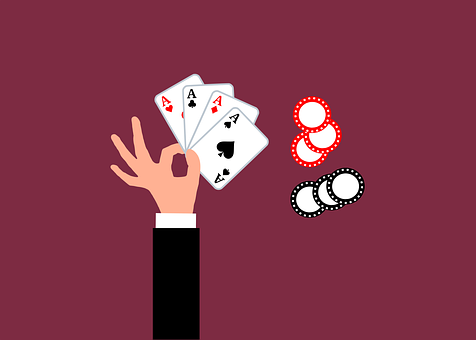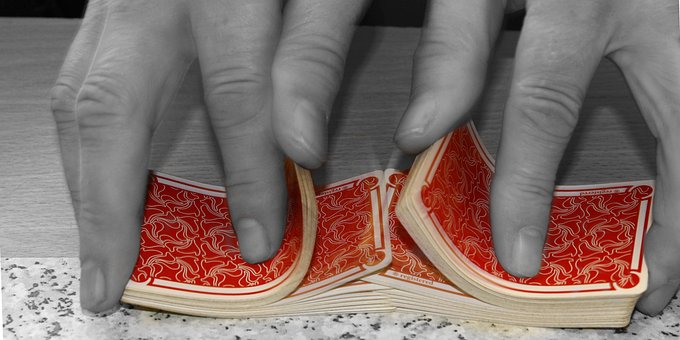Once you have a good grasp of the fundamentals, you must understand that there are different poker play styles. Many experienced poker players will switch between them depending on their opponents and the specifics of their game. Here’s a guide on what they are and how you can use them to your advantage.

The Big Four
There are four most popular and widely used styles, which are the following:
Tight-Aggressive (TAG)
The Tight-Aggressive style is characterized by playing only a few hands, but playing them aggressively. With this approach, you will play very few hands but with great confidence when you finally have a good hand. This keeps your opponents guessing and makes it difficult for them to predict your behavior. It also allows you to maximize your profits when you get a good hand.
The downside to this, however, is that you may be folding many potential hands that could have been profitable. Also, it can make you appear predictable to your opponents.
Loose-Aggressive (LAG)
The Loose-Aggressive style is the opposite of the Tight-Aggressive approach and involves playing many hands but playing them extremely aggressively. This strategy takes more risks than the Tight-Aggressive approach but can also be highly profitable if your opponents are unprepared.
It is a great way to upset the balance of power and put your opponents on edge. However, watch out for the risks – it can often be difficult to control the strength of your hand when playing too many hands.

Tight-Passive (TP)
The Tight-Passive style is more conservative than either of the other styles and involves playing fewer hands but also playing them passively. This style does not include aggressive betting, which is a downside because it can make your opponents less likely to fold. There’s also the fact that playing too passively will make you an easy target for more aggressive players.
However, if you manage to get a good hand, it could be profitable since your opponents only will see the strength of your hand at the end. So, if you play your cards right, they will make many mistakes as the game progresses. It’s why this style is best used when trying to build a pot slowly or when you have a strong hand that you want your opponents to call.
Loose-Passive (LP)
The Loose-Passive style involves playing many poker hands but also playing them passively. It can be beneficial in certain situations as it may encourage your opponents to bet more than they should or make them hesitate when you have a strong hand.
It’s an unorthodox style whose weakness is that it can make you appear too predictable. But once you master it and know when to use it, it can be one of the best approaches to playing the game.

How to Know Which Play Style Works for You?
Choosing the right play style for your poker game will depend on the type of poker you are playing and the players at the poker table. Knowing how to switch styles can be a great advantage as it keeps your opponents guessing and can help you maximize your profits.
That, however, is easier said than done. So for that, here are some tips you should remember:
Consider Your Personality
The way you approach poker should reflect your personality and style. For example, if you are cautious, the Tight-Aggressive or Tight-Passive may be the best fit for you. On the other hand, if you are more of a risk taker, the Loose-Aggressive or Loose-Passive might be the better option.
Learn Them All
While you won’t be able to avoid the fact that you will have a primary play style based on your personality, you must understand how all of the styles work and that you can switch between them if needed. Doing so will help you become a better player in the long run and give you an added edge.
Consider Your Bankroll
Your bankroll should also be taken into account when choosing a play style. Some styles are riskier than others, so the Tight-Aggressive or Tight-Passive might be your best bet if you have a smaller bankroll. On the other hand, if you have more money to play with, then the Loose-Aggressive or Loose-Passive might be more suitable for you.
At the same time, while playing according to your bankroll can be advantageous for you, it can also make you predictable. Mix your play style up as often as possible to keep your opponents guessing.

Analyze Your Opponents
Take some time to observe how your opponents are playing and make adjustments accordingly. If they are mostly tight players, a Loose-Aggressive style may be more beneficial as it will throw them off their game. Conversely, if they are loose players, the Tight-Aggressive or Tight-Passive approach may be more appropriate.
You should also note how your opponents will react to certain plays. For example, if they are more likely to call a bet when you raise, then the Loose-Aggressive style may be beneficial. On the other hand, if they tend to fold when you make a big raise, then Tight-Aggressive or Tight-Passive might be best.
Stay Flexible
It’s important to remember that you don’t have to stick with just one style throughout a game. Switching between styles can be a great advantage, as your opponents will not know what to expect from you.
Successfully doing this requires not just understanding the different play styles but also the ability to adjust your strategy on the fly. After all, there is a vast difference between knowing how other play styles work and using them yourself.
On top of that, switching to them seamlessly is an entirely different matter altogether. But with enough experience, you can learn how to do all of those things.
You should also note how the game progresses and adjust your play style accordingly. If you are winning consistently, you may want to switch up your poker strategy or risk falling into a predictable pattern that your opponents can exploit. On the other hand, if you are losing, a more conservative approach may be in order.
Show ‘Em You Got Style
No matter what style you choose to adopt, playing poker is all about making the right decisions and managing your risks. Learning them all and effectively switching between them can help you become a successful poker player and increase your chances of winning big pots.





